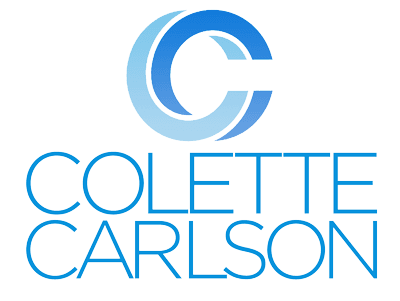This past week, I managed to make a mistake that cost me time, money, and my sanity. (Let’s just say my computer and I are finally back on speaking terms.) I had to wipe my hard drive, download software, reset every password I’ve ever created, including the one for that online yoga app I haven’t opened since Covid, freeze my credit, and spend hours on the phone with banks.
And I’ll be honest…I felt stupid. I know better. But I was frustrated, needed tech support, thought I had found a legitimate source, and I hadn’t.
If you’ve ever beaten yourself up for a mistake, you know the feeling. The shame spiral starts: “I should have known better. How could I have been so careless?” But here’s the truth: mistakes happen to all of us. What matters isn’t avoiding them, it’s how quickly you move through them. That’s where resilience and The Human Edge™ come in to play.
Why Mistakes Happen (Even to Smart People)
Mistakes aren’t proof of incompetence; they’re proof of humanity. We get tired, distracted, rushed, or overconfident. Our brains are wired for shortcuts, and sometimes those shortcuts lead to missteps.
A leader announces a change in a town hall before checking with HR and spends the next week backpedaling. A sales rep promises a client the new feature will be ready “next month” without confirming with product development, and suddenly, the relationship is on shaky ground. Or maybe it’s as simple as hitting “Reply All” when you meant “Reply.” None of these mean the person is incapable; it just means they’re human.
The Shame Spiral: Why It’s So Costly
The bigger danger isn’t the mistake itself, it’s what happens afterward. That endless replay loop in your head. The rumination that feels like problem-solving but isn’t. Every time we dwell on what we can’t change, we’re essentially doing push-ups for our anxiety muscles.
And our brains take note. Every repetitive thought creates and strengthens neural pathways, so when we practice worrying, the worry circuits of our brain are reinforced. A sales manager who replays yesterday’s missed pitch over and over doesn’t walk into today’s client meeting confident. An employee who keeps thinking about the typo in their report carries that shame into the next assignment. A leader who beats themselves up for fumbling an answer in front of the board shows hesitation instead of composure.
Top performers catch themselves in the spiral. They pause, ask, “Is this worry leading to an action?” And if the answer is no, they redirect immediately.
Control the Controllables
Here’s the key: top performers don’t let what’s outside their influence hijack what’s within their influence. They control the controllables and TAKE CONTROL by taking action.
Action is the antidote for stress, anxiety, worry, and uncertainty. In other words, when it’s go-time, don’t sit and stew—stand up and DO.
That doesn’t mean shoving down real emotions that need healing. That’s therapy, and I’m a big fan. What I’m talking about here is the everyday noise that can derail us if we let it. And in those moments, your mindset matters.
A client deadline was missed? Instead of hiding, pick up the phone, own the mistake, and outline a fix. A leader realizes they shared the wrong numbers in a meeting? Send a clarifying message and move on. My own computer debacle? I took the smallest action with the greatest impact: wiping my system, securing accounts, and then making the calls I needed to make.
Moving from Rumination to Reset
When you catch yourself ruminating, hit pause and redirect immediately. Ask: Are my current thoughts serving my highest good? If the answer is no, switch gears. Your mind can only hold one thought at a time, and every moment you get to choose whether you’re going to be the coder or let stress hack your system.
So the next time a sales call tanks, a meeting goes sideways, or you get caught in your own “I should have known better” loop, remember: it’s not the mistake that defines you, it’s the choice you make next.
The Human Edge™ in Action
After all the chaos, I finally reminded myself: I have my health. I have people I love who love me back. Perspective matters. My bank accounts can be unfrozen—my mindset is what I refuse to keep on ice.
And here’s a bonus: research shows self-compassion actually boosts resilience and motivation. According to Dr. Kristin Neff, people who practice self-compassion are less likely to experience anxiety and depression and more likely to take accountability when things go wrong. In other words, cutting yourself some slack isn’t letting yourself off the hook, it’s giving yourself the energy to climb back on it.
The Human Edge™ is about leveraging your mindset, communication, and actions in ways technology never can. And when mistakes happen, and they will, that edge shows up in how you choose to respond.
So when you find yourself in a shame spiral, remember: don’t sit and stew. Stand up and DO. And if all else fails, at least change that yoga password.







